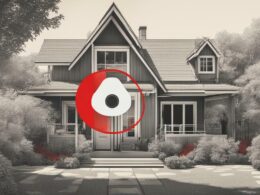If you’re a pet owner, you know that maintaining a beautiful and safe lawn can be a challenge. Your furry companions can wreak havoc on your grass with their urine, feces, digging, and excessive play. That’s why it’s essential to implement pet-friendly lawn care strategies to ensure the well-being of both your pets and your outdoor space.
With our expert tips, you can create a pet-friendly environment that allows your beloved pets to enjoy the outdoors while keeping your lawn lush and safe. From reseeding with damage-resistant grass types to dealing with dog waste and creating play areas without grass, we have you covered.
By following these pet friendly lawn care tips, you can minimize damage to your lawn caused by your pets, avoid toxic plants, prevent flea infestations, and reduce the need for chemical lawn treatments. Your pets will have space to roam and play, while you can enjoy a beautiful, safe, and pet-friendly outdoor environment.
So, let’s dive into the world of safe and pet-friendly lawn care strategies to create a harmonious space for both you and your furry friends.
Reseeding Your Lawn with Damage-Resistant Grass Types
When it comes to maintaining a dog-friendly lawn, choosing the right grass type is crucial. Different grass types have varying levels of resistance to damage caused by dog urine, feces, and wear and tear. By reseeding your lawn with a damage-resistant grass type, you can ensure that your lawn stays healthy, vibrant, and pet-friendly.
There are several damage-resistant grass types that are ideal for dogs and can withstand the challenges posed by their activities. Consider these options:
- Tall Fescue: This type of grass is known for its durability and ability to tolerate high traffic areas.
- Kentucky Bluegrass: With its dense growth and self-repairing capabilities, Kentucky bluegrass is an excellent choice for dog owners.
- Perennial Ryegrass: Known for its quick germination and hardiness, perennial ryegrass can handle heavy use and pet-related damage.
- Bermudagrass: This warm-season grass is highly tolerant to wear and tear, making it a popular choice for dog owners.
- Zoysiagrass: Zoysiagrass has a dense growth pattern, making it resilient to dog activities and capable of self-repair.
If replacing the entire lawn with a new grass type seems overwhelming, you can focus on reseeding or laying new sod only in the areas where your dog spends the most time. By targeting these spots, you can give your lawn the added protection it needs and keep it looking lush and green.
Deal with Dog Waste Immediately
Dog waste management is essential for maintaining a healthy and vibrant lawn. Dog waste contains high levels of nitrogen, which can burn the grass and cause unsightly brown spots in your yard. To prevent this damage, it’s important to address dog waste promptly and effectively.
When your dog relieves themselves, it’s crucial to clean up and dispose of the waste immediately. Use a waste bag or pooper scooper to collect the waste, ensuring that none of it remains on the grass. Proper disposal of dog waste helps eliminate the nitrogen-rich content that can harm your lawn.
After cleaning up solid waste, it’s also important to address dog urine spots. Dog urine is highly concentrated in nitrogen and can cause even more damage to your grass. To mitigate this, promptly water the area where your dog has urinated, effectively diluting the nitrogen and flushing it into the soil.
By watering the spot thoroughly with a hose, you can dilute the nitrogen and minimize its impact on your lawn. This simple step helps prevent the formation of unsightly yellow patches caused by dog urine.
By taking these actions to deal with dog waste immediately, you can effectively manage the nitrogen content in your lawn and minimize the damage caused by dog waste. This will help you maintain a beautiful, green lawn that is safe for both your pets and your family to enjoy.
Mow the Grass Higher
Taller grass has deeper roots, making it more resistant to damage from dog activities. To ensure a dog-friendly lawn and promote healthy grass growth, it’s important to adjust the cutting height on your lawn mower. Raise the blade to the highest recommended setting for your specific grass type. By doing so, you’ll encourage the roots to grow deeper, resulting in a stronger and more resilient lawn that can withstand the daily wear and tear caused by your furry friend.
Additionally, mowing the grass higher offers an added benefit of making damage spots less noticeable. As your dog plays and runs around, they may inadvertently cause some minor damage to the turf. However, taller grass can help hide these spots, giving your lawn a more uniform and aesthetically pleasing appearance.
Remember, every grass type has a recommended mowing height. Be sure to consult with a lawn care professional or refer to the instructions provided by the seed or turf manufacturer to determine the most appropriate cutting height for your specific grass variety.
How Can Renting Goats for Land Clearing Be a Safe and Pet-Friendly Lawn Care Solution for Homeowners?
Many homeowners are turning to rent goats for land clearing as a safe and pet-friendly lawn care solution. Goats are natural grazers and can chomp through unwanted vegetation without the need for harmful chemicals or heavy machinery. Renting goats for land clearing is an eco-friendly and sustainable way to maintain a tidy yard.
Create Areas without Grass for Your Dog to Play
If you want to prevent your dog from damaging your grass, it’s important to create designated areas in your yard that don’t have grass. By replacing some areas of grass with dog-friendly hardscapes, you can provide a safe and enjoyable space for your furry friend to play.
Consider using hardscape materials such as paving stones or concrete to create a dog path or patio. These smooth materials are gentle on your dog’s paws, minimizing the risk of injury during playtime. Opt for lighter-colored materials that won’t absorb as much heat, keeping the surface cool and comfortable for your pet.
Another option for non-toxic ground covers is using mulch or other suitable alternatives. Ground covers like snow-in-summer, creeping thyme, Labrador violet, silver carpet, and Irish moss are excellent choices that require minimal maintenance and offer a damage-resistant substitute for traditional turfgrass.
By incorporating dog-friendly hardscapes and non-toxic ground covers in your yard, you can create a beautiful and resilient landscape that both you and your dog can enjoy. These alternatives not only protect your grass but also provide a safe and inviting space for your furry companion to run, play, and explore.










